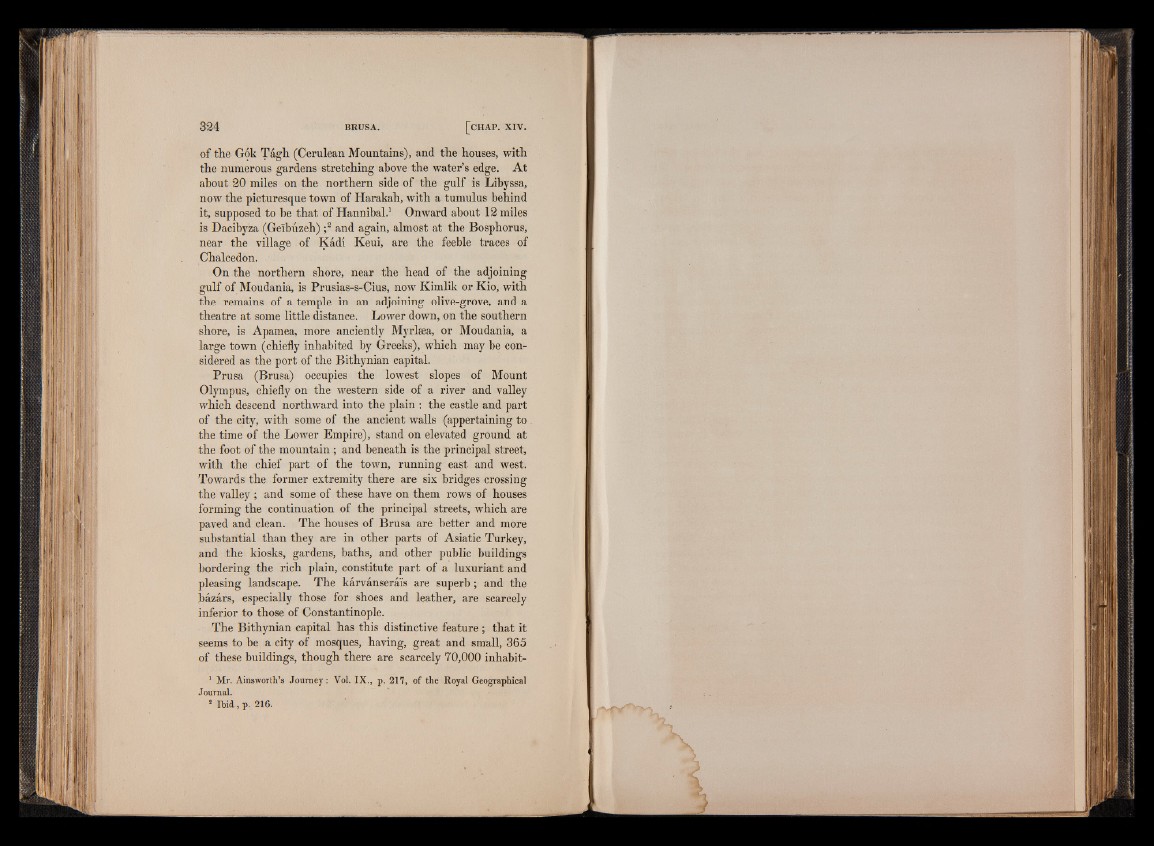
of the Gok Tagh (Cerulean Mountains), and the houses, with
the numerous gardens stretching above the water’s edge. At
about 20 miles on the northern side of the gulf is Libyssa,
now the picturesque town of Harakah, with a tumulus behind
it, supposed to be that of Hannibal.1 Onward about 12 miles
is Dacibyza (Geibuzeh) ;2 and again, almost at the Bosphorus,
near the village of Kadi Keui, are the feeble traces of
Chalcedon.
On the northern shore, near the head of the adjoining
gulf of Moudania, is Prusias-s-Cius, now Kimlik or Kio, with
the remains of a temple in an adjoining olive-grove, and a
theatre at some little distance. Lower down, on the southern
shore, is Apamea, more anciently Myrltea, or Moudania, a
large town (chiefly inhabited by Greeks), which may be considered
as the port of the Bithynian capital.
Prusa (Brusa) occupies the lowest slopes of Mount
Olympus, chiefly on the western side of a river and valley
which descend northward into the plain : the castle and part
of the city, with some of the ancient walls (appertaining to
the time of the Lower Empire), stand on elevated ground at
the foot of the mountain ; and beneath is the principal street,
with the chief part of the town, running east and west.
Towards the former extremity there are six bridges crossing
the valley ; and some of these have on them rows of houses
forming the continuation of the principal streets, which are
paved and clean. The houses of Brusa are better and more
substantial than they are in other parts of Asiatic Turkey,
and the kiosks, gardens, baths, and other public buildings
bordering the rich plain, constitute part of a luxuriant and
pleasing landscape. The karvanserais are superb; and the
bazars, especially those for shoes and leather, are scarcely
inferior to those of Constantinople.
The Bithynian capital has this distinctive feature; that it
seems to be a city of mosques, having, great and small, 365
of these buildings, though there are scarcely 70,000 inhabit-
1 Mr. Ainsworth’s Journey: Vol. IX., p. 217, of the Royal Geographical
Journal.
* Ibid., p. 216.